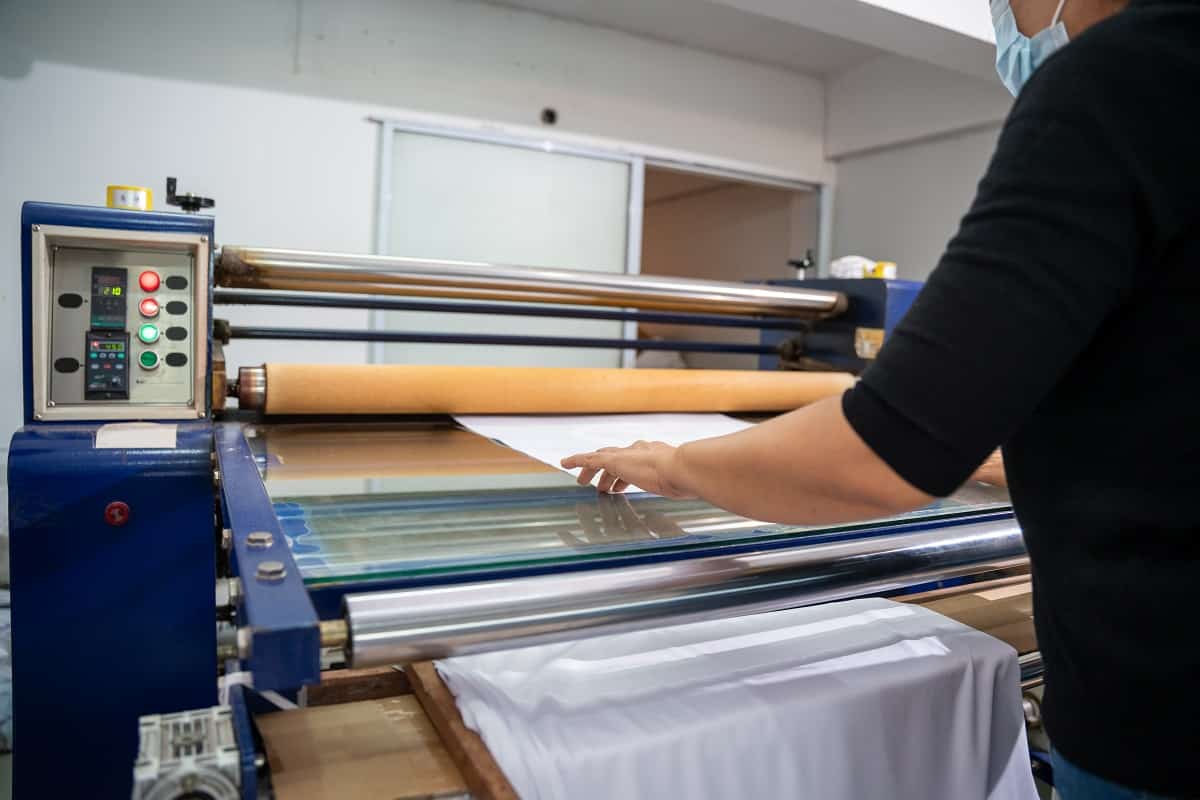Who doesn’t like owning customized clothes and accessories? And there’s no denying that heat transfer printing is one of the best ways to get some.
If you are looking to set up a heat transfer printing business, you will need a high quality heat transfer printer along with heat transfer paper. In this article we will focus on the latter.
Now, one of the primary things that determine the exact price of the print will depend on the cost of the paper, which will largely vary according to the type, quality, and brand.
For instance, Avery 08938 (one of the top-selling inkjet heat transfer papers) usually costs about 15 dollars for a pack of 18 papers. They are manufactured using superior technology that prevents the print from fading away quickly.
In case you’re wondering how you can use a heat press for t-shirts or how to print on heat transfer vinyl with inkjet, do check out our resources, they have everything you’ll need to know.
With that, let’s take a look at the different factors that dictate the price of these papers and what to know before purchasing them.
Types of Heat Transfer Papers

Heat transfer papers can be classified into several types according to the type of printer that they are compatible with and the kind of colors they support. Let’s start with the first.
1. Based on Printers
-
- Inkjet transfer paper
- Laser transfer paper
- Sublimation paper
An inkjet heat transfer paper is perhaps the most commonly used medium for heat printing, primarily because it’s priced affordably without really compromising on quality. It can be your perfect bet if you’re just starting out with the business or don’t want to spend a fortune on buying.
On the other hand, laser heat transfer papers are ideal for producing high-quality artwork on both soft fabric and hard surfaces. These tend to be costlier than the former, so you may want to consider bulk buying to save on the purchase cost. Besides, these papers are more suitable for commercial purposes.
Finally, sublimation print papers transfer the print to the fabric, and the process is similar to tattooing the skin. The prints thus produced are permanent, durable, and don’t crack easily over time, making these papers more expensive than their predecessors.
One thing to keep in mind is these papers are printer-specific, meaning that the papers compatible with inkjet printers don’t work with laser printers and vice versa. Hence, you should consider the type of printer before making a decision.
2. Based on the Fabric Color
Whether you’re using an inkjet or laser printer, it’s important to consider the fabric you plan to print on. This is because the ink will rely on the background to create the desired color, and a dark garment color will make most colors practically invisible.
Hence, heat transfer papers designed for dark garments or fabric are equipped with a thick opaque background or coating, which enhances the vibrancy of color. Likewise, transfer papers for light-colored garments have a clear or transparent layer, which helps with the accurate transfer.
Since the former has more layers, they may be more costly than the latter, especially if purchased on a piece-by-piece basis.
3. Based on the Graphics Quality
If you’re starting out with a heat transfer business or printing on items for personal use, then you may want to start off with basic graphic printing, also known as vector graphics. In fact, they are commonplace for heat transfer prints and can be achieved using almost any printer (inkjet or laser).
On the other hand, high-quality photos or images are best printed on inkjet heat transfer papers since they facilitate the reproduction of a wide range of colors, shades, and gradients. This means that you won’t miss out on the details, resulting in precise color representation.
Keep in mind that only those laser printers that use a white toner (alongside the standard toners like magenta, cyan, and yellow) can achieve the print quality of inkjet printers in this regard. In hindsight, there are limited options when it comes to utilizing laser heat transfer papers for the purpose.
How Much Is Heat Transfer Paper Frequently Asked Questions?
What Is the Best Way to Perform Heat Transfers?
Ideally, heat transfers on fabric or other objects should be performed by a quality heat press machine. These machines are equipped with different temperature, time, and pressure settings, as different fabrics have different requirements.
Once you decide on these settings, place the t-shirt and printed image in the dedicated plates and “press” on the fabric. This will transfer both the paper and the image in a way that the paper doesn’t look printed on.
While this method is easy and cost-effective, it may still be costly to buy a heat press for personal needs. In such cases, you can try a simple iron press for the same result.
How to Choose the Right Dimension of the Heat Transfer Paper?
The dimension of the paper will depend on the size of the image or photo as well as the size of the area to be printed. Generally, a longer paper will allow you to print larger images, and the most commonly used size is 13 by 19 inches.

How Much Is Heat Transfer Paper Conclusion
Since the price of the heat paper is directly related to the final cost of the print, you should ensure that you’re using the right paper. Otherwise, you will run the risk of losing customers who won’t find it worth investing their money in your business.
And DIYers using iron presses should always practice on spare fabric to get the right idea about the heat and pressure to be applied. See you next time!


